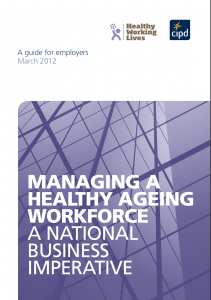The primary aim of human resources management is to ensure that all of the company’s employees collaborate actively in the organisational project. This is done by bringing about greater equity among employees, increasing the coherence of the decisions and actions that affect them, improving the quality of their work life and putting in place ethical and responsible practices, among other measures. All of this must also be applied to older workers, because obviously they too are part of human resources. The key question is whether the aforementioned measures should be implemented in the same way when dealing with older workers or if some special consideration must also be taken into account in the case of these workers.
Well, yes, there are some specific questions in the area of human resources management that must be considered when dealing with ageing employees.

For one thing, as a result of demographic changes, the average age of a company’s workers is increasing rapidly. Also, young people are joining the job market later, due to longer periods of schooling and training (and also because of the difficulties of finding employment). In consequence, intermediate age groups (35-50 years of age) and older age groups (over 50) are taking on a primary role in companies.
Moreover, national and international institutions agree on the importance of implementing strategies that guarantee the quality of employees’ work lives as they grow older, thus enabling them to stay at the company longer. All of this is known as promoting active ageing (AA) and it is becoming one of the main vectors of social and work policy in the EU, in response to the demographic ageing of society as a whole and of the job market in particular.
In addition to the prolongation of people’s work lives and the delay in retirement that comes with it, the adoption of effective measures in the area of AA is justified by certain concepts related to health and work capacity. Promoting AA means creating work environments that are favorable to older workers and adapting learning processes to these workers’ needs.
Implicit in all of this is the need not just to maintain but to care for the company’s human resources, paying attention to their age and progressive ageing.
What is positive about having an ageing workforce? Older workers are valued for their vast experience and for their in-depth knowledge of the company and the job they do. They are also highly appreciated for their greater emotional maturity, their commitment to the company, their reliability, their contribution to the company’s good reputation and their high degree of independence. They often inspire and serve as an example to younger workers.
If ageing, as demographic data indicate, is becoming a challenge to companies, it is also going to be necessary to stimulate intergenerational solidarity, by which the skills of the younger workers intermingle with the advantages typical of older workers. For example, more senior generations can nourish younger workers with their experience and the newcomers can teach older workers about new technology and applications. The idea is to foster intergenerational learning by creating different kinds of relationships, which may take the form of offering guidance, sharing skills or serving other individuals in an advisory capacity. Other approaches might include the creation of multigenerational work teams or the application of initial or continuous training methods that make the most of situations in which different generations get together and learn together. Intergenerational learning benefits companies in several ways: it helps keep basic skills and experiences inside the organization, it combines the strong points of the different generations and strengthens relationships within the company because it helps break down stereotypes and negative attitudes regarding age.
In short, ageing should be viewed not as a threat but as a challenge and an opportunity. It is an important issue that every company must address through its policies in human resources management, for reasons related to both competitiveness and social responsibility.








